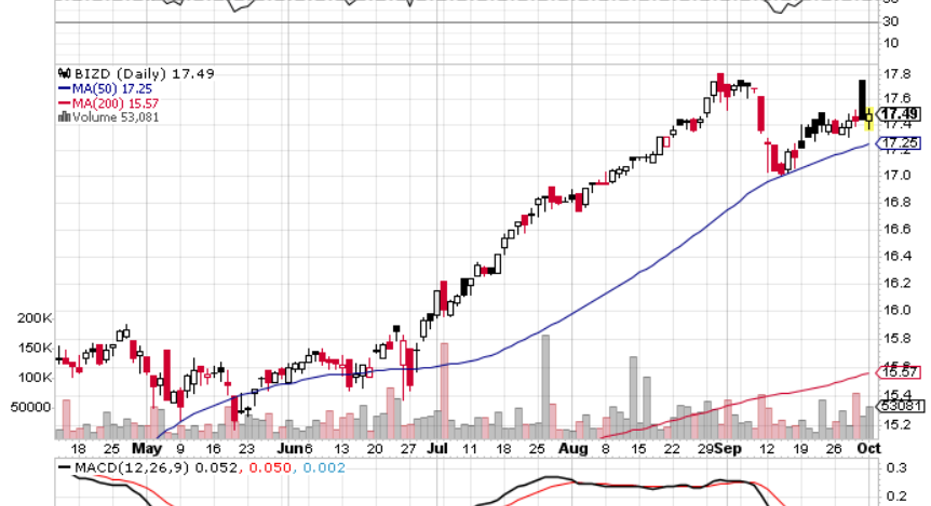BIZD: Good News for a Business Development Company ETF

Against the backdrop of falling Treasury yields, plenty of income-generating asset classes and sectors have are delivering for investors this year. That includes business development companies and the VanEck Vectors BDC Income ETF (NYSEArca: BIZD). However, BDCs and BIZD might not be left out in the cold if interest rates rise.
BDCs offer attractive income opportunities since they are required to pay out 90% of income in form of dividends, a structure similar to what income investors find with real estate investment trusts (REITs).
SEE MORE: BDC ETFs for a Growing Economy, Attractive Yields
BDCs essentially help fund small $5 million to $100 million businesses. Ever since the financial crisis, regulators have clamped down on traditional lenders and made it harder for businesses to access public capital, which has forced smaller business to take loans from BDCs.
Investors have embraced BDCs for their attractive yields as they are required to pay out at least 90% of interest income received in cash dividends. BDCs act as an alternative to bank loan debt, helping smaller companies grow and profiting off the investments. In an expanding economic environment, BDCs should also benefit from stronger domestic businesses.
“What makes them especially interesting now is that the loans they hold are mostly floating rate, which means BDCs could earn more as rates rise. While Federal Reserve officials continue to rattle sabers about hiking the federal-funds rate this year, other short-term rates are already rising. Most loans are pegged to the London interbank offered rate, which, at 0.85%, is up from 0.32% a year ago. Libor needs to rise above a preset floor, usually 1%, for the floating-rate feature of most loans to kick in, but it’s getting close,” reports Amey Stone for Barron’s.
SEE MORE: Making Sense of Acquired Fund Fees in BDC ETFs
BDCs are also seen as sensitive to higher interest rates, but that situation may be overstated as well. Since the debt is typically senior secured and set to float with interest rate benchmarks, there is diminished rate risk. When the Fed raises rates, BDC loan interest rates pegged to the London Interbank Offered Rate, or LIBOR, will also rise.
Additionally, since the debt is typically senior secured and set to float with interest rate benchmarks, there is diminished rate risk. Since the debt is typically senior secured and set to float with interest rate benchmarks, there is diminished rate risk. When the Fed raises rates, BDC loan interest rates pegged to the London Interbank Offered Rate, or LIBOR, will also rise.
“BDCs have attributes similar to the bank-loan funds covered in this column last week. But BDCs employ leverage equal to about 70% of their assets, which boosts income—and risk. Closed-end floating-rate funds are similar to BDCs, but those funds use leverage up to only about 40% of assets,” according to Barron’s.
VanEck Vectors BDC Income ETF
The opinions and forecasts expressed herein are solely those of Tom Lydon, and may not actually come to pass. Information on this site should not be used or construed as an offer to sell, a solicitation of an offer to buy, or a recommendation for any product.
This article was provided by our partners at ETFTrends.